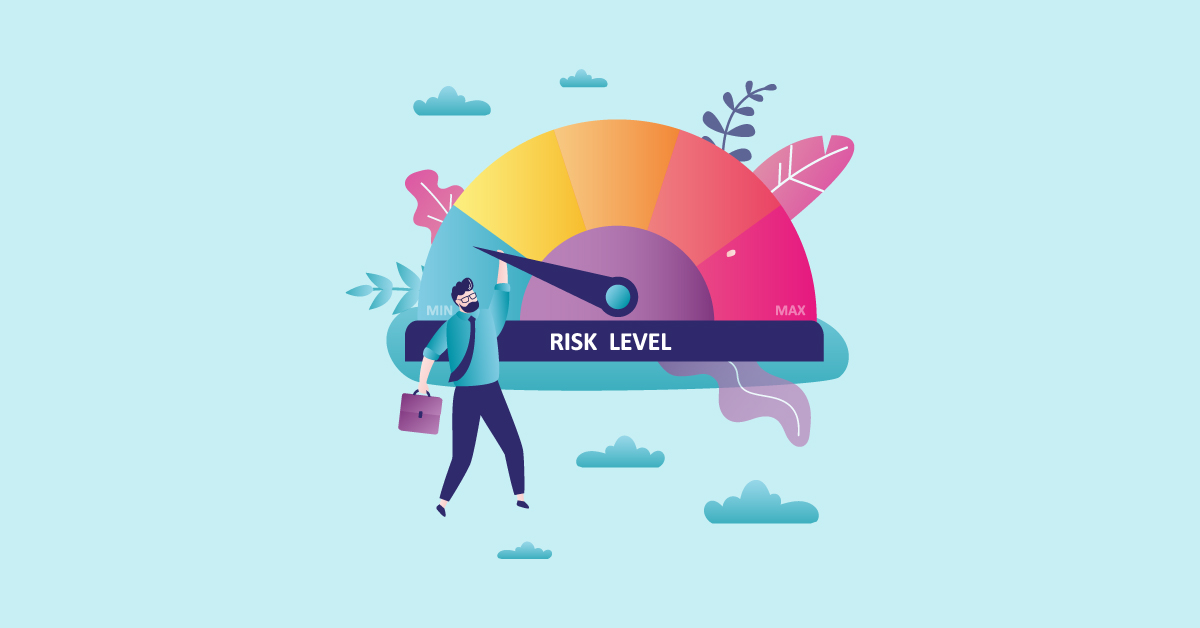In July 2022, the U.S. Bureau of Labor Statistics reported that the Consumer Price Index had risen by 9.1% over the previous 12 months. The Federal Reserve responded by raising interest rates in the hopes of reducing spending and allowing the economy to cool off. As a result, investors are wondering how to take advantage of higher rates without a substantial increase in risk.
Although reducing your risk exposure tends to lead to lower returns, a somewhat conservative approach to investing could help you limit your losses while also earning interest income. If this approach suits your current investing goals, consider these eight low-risk investments.
No-Risk vs. Low-Risk Investments
Before making any investments, examining your risk tolerance and looking for investment vehicles to match is essential. With a no-risk investment, you’ll never lose any of your principal. If you go with a low-risk investment, there’s a chance you could lose some of your principal over time. However, there’s also a chance you’ll break even, leaving you with nothing more than your initial investment.
Understanding how low-risk investments are likely to affect your purchasing power is also important. These investments typically produce lower returns, meaning inflation may cancel out some of your earnings. In most cases, low-risk investments are ideal for short-term investing. However, high-risk investments may be a better fit if you want bigger returns.
1. Series I Savings Bonds
Series I savings bonds are one of the lowest-risk investments. In addition, they’re backed by the U.S. government, so there’s very little chance that you’ll lose any principal, making them ideal for investors who take a conservative approach to manage their finances.
Series I bonds also protect you against inflation. When inflation increases, the interest rate on the bond also increases, leading to more significant returns. Conversely, if inflation decreases, the bond’s interest rate decreases accordingly. Interest accrues monthly and is paid out when you cash in the bond. Due to high inflation levels, the U.S. Treasury currently pays 9.62% on I bonds purchased until October 2022.
2. Treasury Securities
In addition to Series I savings bonds, the U.S. Treasury sells Treasury notes, Treasury bills, Treasury inflation-protected securities (TIPS) and Treasury bonds. One of the benefits of buying Treasury securities is that they’re highly liquid, meaning it’s easy to sell them if you need cash. These securities mature as follows:
- Treasury notes: Up to 10 years
- Treasury bills: One year or less
- TIPS: Up to 30 years; value increases or decreases with inflation
- Treasury bonds: Up to 30 years
Treasury securities are considered low-risk investments because you generally don’t lose money if you hold on to them until they mature. However, if you sell one of these securities before its maturity date, you may lose some of the principal.
3. High-Yield Savings Accounts

A high-yield savings account isn’t an investment in the traditional sense, but it does produce a return, making it an option for investors with a low tolerance for risk. HYSAs are considered a low-risk investment because you won’t lose your principal. Even if the bank fails, the Federal Deposit Insurance Corporation (FDIC) insures deposits up to $250,000 per account. If you open an HYSA with a credit union, the National Credit Union Administration offers the same type of protection. Although you can’t lose your principal, a high inflation rate could reduce your purchasing power.
4. Short-Term Certificates of Deposit (CDs)
When you open a CD, you give up access to your money for a certain period. In exchange, the bank agrees to pay you interest. As long as you use a federally insured bank, the only way to lose money on a short-term CD is to withdraw your money early. Even if the bank fails, your FDIC protections will kick in, ensuring you don’t lose your initial deposit.
If you think you might want to make an early withdrawal, you can open a no-penalty CD instead. This type of CD allows you to withdraw your money early without paying a penalty, enabling you to move funds to higher-paying accounts as needed.
5. Dividend-Paying Stocks
Stocks are a little riskier than HYSAs, CDs and Treasury securities, but they’re not as risky as currency trading or investing in futures or options. Dividend-paying stocks are even less risky, as they pay out cash dividends to shareholders. In addition, many dividend-paying companies are well-established in their industries, making them reasonably stable even when market conditions aren’t favorable. The main risk of investing in dividend-paying stocks is that a company may have to eliminate its dividend if its financial performance deteriorates.
6. Corporate Bonds
Some companies raise money by selling corporate bonds. If you purchase one of these bonds, the company promises to pay interest on your investment. They may also promise to return your principal when the bond matures. Although stocks and corporate bonds are both used to raise money, there’s a significant difference between them.
When you buy shares of stock, you receive equity in the company, and If the company performs well, your return on investment increases. However, you don’t receive any equity when you buy corporate bonds. No matter how well the company does, you only receive your principal and any agreed-upon interest when the bond matures.
It’s important to understand the risk involved with investing in corporate bonds. First, there’s an interest-rate risk. As interest rates change, the value of a corporate bond also changes; if interest rates increase, the value of the bond goes down, and if interest rates decrease, the value of the bond increases. Second, there’s default risk. There’s a chance the company could renege on its promise to pay you interest and/or return your principal. To reduce your interest-rate risk, consider investing in short-term corporate bonds instead of long-term ones. Investing in established companies can also help you limit your default risk.
7. Preferred Stocks
If you buy preferred stocks instead of common stocks, you have a higher claim on the dividends. You also have a greater claim on the company’s assets if the business becomes insolvent. This makes preferred stocks a little more attractive than common stocks.
One of the main reasons to invest in preferred stocks is that you’ll receive regular cash payments. You also receive your dividend payments before common stockholders receive theirs. If you decide to invest in preferred stocks, be aware that the company may have to suspend dividend payments under certain circumstances.
8. Money Market Accounts
Money market accounts are similar to savings accounts but usually require a much higher minimum deposit. One reason to invest is that the interest rate on a money market account is usually higher than the interest rate on a regular savings account.
You can also spend cash in your money market account, which impacts how much interest you earn. In addition, money market accounts are FDIC-insured, so you won’t lose principal even if the bank fails.
9. Gold Hedging
Gold is generally considered a great way to diversify someone’s portfolio and protect themselves against market downturns, but most people don’t know where to start. Some might even wonder if it’s worth the trouble.
Gold tends to perform well when the economy is doing poorly and vice versa. This means that when the economy falters, and people start to lose faith in their financial system, they move into safe-haven assets, like gold. And when things are going better, they move out of those assets and into riskier ones, like stocks and real estate.
That’s why it’s important to remember that gold isn’t an investment – it’s a hedge for investments. If someone wants to protect themselves against currency devaluation or inflation, then gold is right for them.
Related: Gold: More Than Just A Shiny Metal – Strategies For Investing In Gold







